

Arduino GSM GPRS and GPS shield. Shield for Arduino designed and based on the module GSM/GPRS SIM900 or the GSM/GPRS & GPS module SIM908, to make calls, voice and data connections via GPRS.
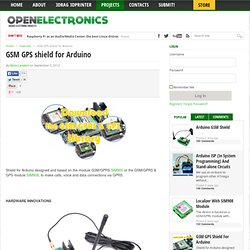
This new version (old Arduino GSM shield) has several new hardware features, that allow maximum customization and provide many configurations. We begin with the supply circuit a simple LM7805. To work, it is necessary to provide an input voltage between 7.5V and 12V. As shown in the circuit diagram, the input voltage, after being stabilized at 5 V, is reduced to 4.3 V by using a diode and provide power to modules that need a voltage between the 3.2 and 4.8 V. During the operations such as the use of GPRS, the module absorbs a current of about 1 A, therefore it is necessary that the power source is able to provide this current intensity. An important technical feature is the serial adapter for the communication between the GSM module and Arduino. The news that is immediately evident is the presence of two jacks for audio. SIM900.h SMS.h. Huawei AT-commands - 3G modem wiki. Station DE Travail A AIR Chaud Pour Soudage Dessoudage SMT CMS. Station de soudage - dessoudage à air chaud + fer à souder thermostaté YIHUA 898D .
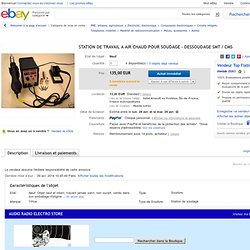
Nouvelle génération de stations extrêmement compactes, silencieuses et performantes. Gestion par micro-computer Samsung et techno PID. Cet équipement permet de travailler facilement sur tous types de microcircuits : cms - smd ( montage en surface ) ou traditionnels ( à insertion ) par soufflage d' air chaud ( hot air reflow soldering ). Un fer à souder basse tension thermostaté de 50 Watts à résistance céramique et pane amovible complète l' ensemble. Ce fer est aux normes antistatiques. Les températures et le débit d' air sont réglables. Device Servers. SENA's device servers are designed to manage serial devices over the Network.
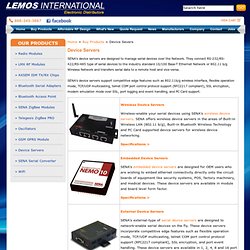
They connect RS-232/RS-422/RS-485 type of serial devices to the industry standard 10/100 Base-T Ethernet Network or 802.11 b/g Wireless Network and transfers serial data to a remote host and vice-versa. SENA's device servers support competitive edge features such as 802.11b/g wireless interface, flexible operation mode, TCP/UDP multicasting, telnet COM port control protocol support (RFC2217 compliant), SSL encryption, modem emulation mode over SSL, port logging and event handling, and PC Card support. Common serial devices used with modem emulation • Common serial devices used with modem emulation include tank gauges, gaming equipment, credit card machines, card swipe readers, traffic control equipment, vending machines, Intelligent Electronic Devices (IEDs), and remote controllers.
SENA's competitive edge: Features: Benefits: Hot Sales!!! TK-106 Latest Live Real Time GSM/GPRS/GPS Vehicle Tracker Support Camera,SD Card, Fuel Sensor, Temperature Sensor, Fr [TK-106]- US$112.00 - Mygpstrackers.com. TK-106 Latest Live Real Time GSM/GPRS/GPS Vehicle Tracker Support Camera,SD Card, Fuel Sensor,Temperature Sensor.
DIGITALFILTER.COM - Online Design Center. DIGITALFILTER.COM. The Scientist and Engineer's Guide to Digital Signal Processing. EDA Open Source Tools Wiki - SemiWiki. GplEDA: All things GPL and EDA. Downloads. Industry leaders cooperate on M2M open source tools, protocols. m2mblog » Open Source or Standards for M2M Services? The comments received on my last blog – New Standards for M2M Services – have raised some interesting points.
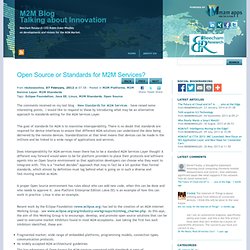
I would like to respond to these by introducing what may be an alternative approach to standards-setting for the M2M Services Layer. The goal of standards for M2M is to maximise interoperability. There is no doubt that standards are required for device interfaces to ensure that different M2M solutions can understand the data being delivered by the remote devices. Standardization at that level means that devices can be made in the millions and be linked to a wide range of applications and services. We are the good guys. Mihini - Open Source framework for M2M. OCCOX la plateforme de développement M2M Open Source by OCCOX. m2m.eclipse.org — M2M development made simple. DeviceHive - M2M, Machine-to-Machine Communication Framework. Introduction aux réseaux Z-Wave. Dans un réseau ZWave on peut distinguer 3 types de devices : Les Contrôleurs (Box Z-wave, Stick USB, télécommande etc…) Les Devices qui font un report (Capteurs détecteurs, contact, etc…) Les Devices qui sont contrôlés (Actionneurs, Lampes, Dimmer, etc…) Il n’y a qu’un seul contrôleur primaire par réseau, c’est lui qui va géré la partie ‘inclusion’ des autres composants dans le réseau.
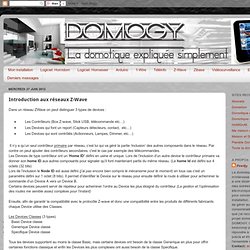
Par contre on peut ajouter des contrôleurs secondaires. c'est le cas par exemple des télécommandes. Les Devices de type contrôleur ont un ‘Home ID’ défini en usine et unique. Daily News from the Machine to Machine (M2M) world. Introduction to M2M at Eclipse - welcome Koneki. Originally appearing in JAX Magazine, Benjamin Cabé introduces Koneki - the new Eclipse venture into M2M technology included in the Juno Release Train.
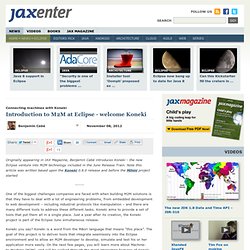
Note this article was written based upon the Koneki 0.8.0 release and before the Mihini project started One of the biggest challenges companies are faced with when building M2M solutions is that they have to deal with a lot of engineering problems, from embedded development to web development – including industrial protocols like manipulation – and there are many different tools to address these different tasks. Koneki aims to provide a set of tools that put them all in a single place. Just a year after its creation, the Koneki project is part of the Eclipse Juno simultaneous release. Django. DeviceHive: An open source M2M development platform. Will Kelly looks at DeviceHive, an open source M2M platform that offers the building blocks for companies to build their own M2M solutions.
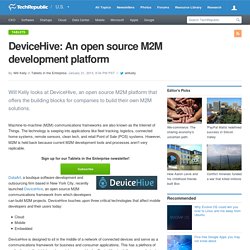
Machine-to-machine (M2M) communications frameworks are also known as the Internet of Things. The technology is seeping into applications like fleet tracking, logistics, connected home systems, remote sensors, clean tech, and retail Point of Sale (POS) systems. However, M2M is held back because current M2M development tools and processes aren't very replicable.
DataArt, a boutique software development and outsourcing firm based in New York City, recently launched DeviceHive, an open source M2M communications framework from which developers can build M2M projects. DeviceHive touches upon three critical technologies that affect mobile developers and their users today: Cloud Mobile Embedded DeviceHive is designed to sit in the middle of a network of connected devices and serve as a communications framework for business and consumer applications.